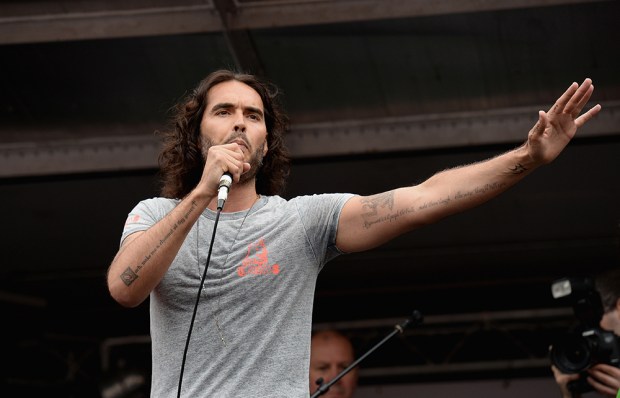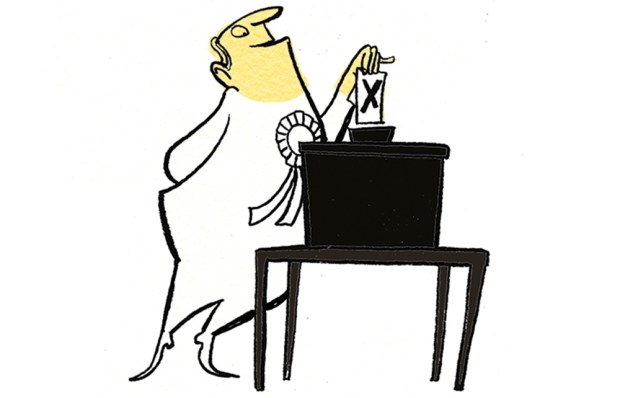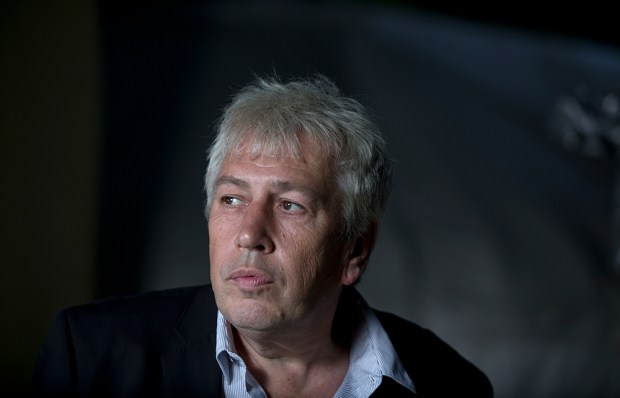Each Easter, I think of David Jones (1895-1974). He was a distinguished painter and, I would (though unqualified) say, a great poet. There is a new, thorough biography of him by Thomas Dilworth (Cape). A sympathetic review in the Guardian wrestles with why he is not better known: ‘The centrality of religion to Jones’s work offers a clue to his obscurity.’ Jones recognised this possibility himself, writing about ‘The Break’ in culture, which began in the 19th century. He thought it had to do with the decline of religion, but more with a changed attitude to art, caused by mass production and affecting what he called ‘the entire world of sacrament and sign’. Jones’s work is indeed religious, so Holy Week is the best week of the year to look at it afresh, but it is not pietistic. It is better understood as an artistic quest — a lifelong effort to collect and connect the sacraments and signs strewn by our history, implanted in our language and available to our senses. In some ways, it is a high-art version of that game called ‘Word Association Football’, invented by Monty Python, in which each new word or phrase must spark the next. The end of John Cleese’s original monologue goes: ‘…about human nature, man’s psychological make-up some story the wife will believe and hence the very meaning of life itselfish bastard, I’ll kick him in the Ball’s Pond Road’, an ending which is almost Jones-like.
The preface to his greatest work, The Anathemata (‘devoted things’), expounds: ‘If the poet writes “wood” what are the chances that the Wood of the Cross will be evoked? Should the answer be “None”, then it would seem that an impoverishment of some sort would have to be admitted. It would mean that that particular word could no longer be used with confidence to implement, to call up or set in motion a whole world of content belonging …to the mythus of a particular culture …This would be true irrespective of our beliefs or disbeliefs… The arts abhor any loppings off of meanings or emptyings out’.
Here are four lines from the final section of the poem, concerning Good Friday:
As the bleat of the spent stag toward the river-course
he, the fons-head pleading, ad fontes
his desiderate cry:
SITIO.’
This passage turns Jesus into the hart that ‘desireth the waterbrooks’ in Psalm 42 of the Book of Common Prayer, picking up the Latin version from the Vulgate and, in translation (‘the bleat’), the Welsh version too. ‘Sitio’ is Latin for ‘I thirst’ — Christ’s words from the Cross. Jones footnotes that it ‘is the form most impressed upon me by hearing the ministers singing the passion on Good Friday. Three pitches are used for words said by Pilate, the priests etc, a middle pitch for the narrative and a deep pitch for the words attributed to our Lord’. Jones also illustrates these words set to music in his poem with one of the painted inscriptions at which he excelled. These few lines quoted epitomise how his art works: it is important to know what Good Friday is, helpful to know the Psalm, not at all necessary to be familiar with its different versions, and an illuminating benefit to have the music behind ‘SITIO’ explained. He is writing about a shared culture, and, in doing so, sharing it with those who may not know it well, not locking it away. The culture described is very particular — because it draws on Jones’s cockney/Welsh background, including the cries of those who used to sell lavender on the London streets of his childhood — but it is also about the whole of western culture, and its two roots, biblical and classical, summed up in The Anathemata’s epigraph from the ‘Dies Irae’, ‘TESTE DAVID CVM SIBYLLA’.
David served as a private in the Royal Welch Fusiliers from 2 January 1915 until the end of the Great War. According to Dilworth, he spent 117 weeks at the front, including at the Battle of the Somme, where he was wounded in Mametz Wood. He saw more active service than any other British writer. In Parenthesis was his resulting book. It looks like a novel, but is really a poem. My theory, for which I have no direct evidence, is that The Anathemata is also a world war book, arising from his experience of the first, but composed in the light of the second. This helps explain Jones’s desire to make ‘a heap of all I can find’. Through total war, the 20th century uniquely threatened all civilisation, so his was a salvage operation. The best first world war literature is explicitly about war; the best second world war works have a less direct connection. The Lord of the Rings, The Four Quartets and The Anathemata come in this category. Jones suffered from shell-shock (which is now called post-traumatic stress disorder), which made him agoraphobic. He lived for many years in one room in Harrow, where the bookshelves at ceiling level showed ‘a beer foam of dust two inches thick’. He never lopped off or emptied out anything. This tiny place was an oddly right setting for his ‘diagnosis’ of poetry as an ‘anamnesis’: ‘an effective recalling of something loved’.
His strong faith went with an attractively caustic attitude to rules. At confession one day, he admitted that he had missed Sunday Mass. ‘What would have happened if you had slipped and hit your head and died?’ asked the priest, ‘You might have gone straight to hell!’ ‘Look father,’ Jones replied, ‘the immortal soul is not like a watch that you drop down the lavatory and it’s gone forever.’
The Mass was, for Jones, the greatest work of art. Despite his love of tradition, he saw it as a modernist would. Its art form did not have linear continuity, but moved by juxtaposition and accumulation. It showed how ‘ludicrous’ was the division between abstract and non-abstract art, because ‘nothing could…be more “abstract” than the Mass, or less “realistic” or more real.’
Got something to add? Join the discussion and comment below.
Get 10 issues for just $10
Subscribe to The Spectator Australia today for the next 10 magazine issues, plus full online access, for just $10.
You might disagree with half of it, but you’ll enjoy reading all of it. Try your first month for free, then just $2 a week for the remainder of your first year.














Comments
Don't miss out
Join the conversation with other Spectator Australia readers. Subscribe to leave a comment.
SUBSCRIBEAlready a subscriber? Log in